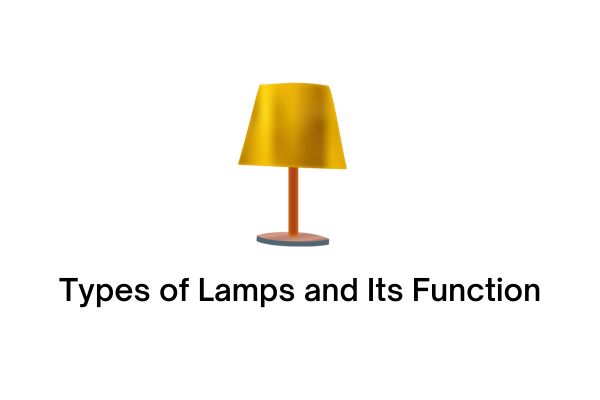What are the types of lamps and its function? As is known, a lamp is an object that can produce light and is useful for illuminating a room or street in dark conditions. Of course, the discovery of this lamp is a very important discovery in history because it can change human civilization.
Understanding Lamp
The definition of a lamp is as a lighting component that emits light, is an integral part of the lighting system.
There are various types of lights such as incandescent, fluorescent and LED.
Each type of lamp is usually designed with a standard base that matches the appropriate fitting, it is important to ensure compatibility between the lamp base and fitting so that installation and use can run smoothly.
Not all lights have an integrated ballast or driver, some have an internal ballast while others are connected to an external ballast found in the lighting system.
These differences are related to the varying lighting technologies and control components required.
For example, fluorescent lamps require a ballast to regulate the flow of electricity, while LED lamps are usually equipped with an internal driver that converts electrical power into a form suitable for LEDs.
Types of Lamps
There are several types of lights that you need to know about. So, to find out, see the following explanation about types of lamps and its function.
1. Bulbs or Incandescent Lights
A bulb’s light is created by passing electricity through a heated filament, producing light.
The glass surrounding the filament prevents air from touching it, protecting it from oxidation.
Various types of light bulbs are available on the market with variations in shape and voltage.
Although they produce strong light, they require more energy than alternatives such as fluorescent lights and LEDs.
Apart from being used for lighting, light bulbs are also used as a heat source, for example to heat animal cages and in industrial processes that require infrared heating.
2. Halogen lamps
A type of incandescent lamp consisting of a tungsten filament sealed in a transparent cover, which is filled with halogen gas such as iodine or bromine, is a type of halogen lamp.
With the presence of halogen, these lamps can operate at higher temperatures than conventional incandescent lamps, without reducing the durability or lifespan of the lamp.
Cycling of the halogen also contributes to preventing darkening of the cover glass by lifting tungsten powder from the inside of the bulb back onto the filament.
This increases the overall efficiency of the incandescent lamp.
3. Fluorescent Lights
Fluorescent or TL lamps have the advantage of producing light with higher efficiency compared to ordinary light bulbs.
A study shows that a 32 watt fluorescent lamp can produce 1700 lumens of light at a distance of 1 meter, while a regular 75 watt light bulb only produces 1200 lumens.
In general, the efficiency ratio between TL lamps and light bulbs is 53:16. Efficiency here is defined as the ratio between the intensity of light produced and the electrical power used.
4. LED lights
The creation of LED lights by Shuji Nakamura in 1991 used Gallium Nitride material, which at that time had not received enough attention from researchers. 1993 was an important milestone when Nakamura succeeded in developing LED lights in various colors, including blue, green and white, for commercial purposes.
This success continued in 1995 with the creation of the blue laser, as well as the development of blue LED which became the main support for Sony’s PS3 blu-ray technology.
Nakamura’s innovations are recognized as major breakthroughs in the world of electronics and energy conservation efforts.
Functions of lamps other than as lighting in the house
Maybe so far lamps have been known to only function as lighting in the house.
However, it turns out that there are several other functions of lamps apart from providing lighting in the house. Here are some of them:
1. Gives a spacious impression to the room
The right lighting has the potential to create a spacious and comfortable impression.
The presence of adequate light in a room can reduce the appearance of annoying shadows in various corners of the room.
When too many shadows form in a room, the room can feel cramped and stuffy.
2. Provides dynamic effects
Proper light placement can create attractive aesthetic shadows, especially when applied correctly in the appropriate location.
The presence of this shadow often beautifies the decoration of the garden or outdoor area.
The importance of harmony between light, objects and space is a determining factor in achieving the desired visual effect.
3. Create a sense of security and comfort
The benefits of natural light are very diverse. This light not only provides a comfortable atmosphere in the room, but also helps maintain eye health by preventing glare.
In addition, the presence of natural light can create a safe atmosphere because it allows everything in the room to be seen clearly.
That is a brief description and explanation of the types of lamps and its function.
So it can be concluded here that a lamp is an object that has many benefits which perhaps until now was only considered as a lighting tool.
More than that, lights can also create a feeling of security and comfort.
Read Also : Household Appliances Before Electricity was Invented
